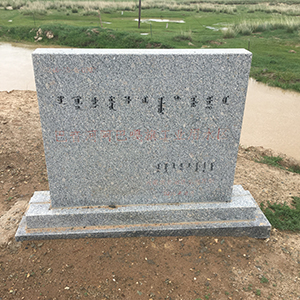Changes in and driving factors of the lake area of Huri Chagannao’er Lake in Inner Mongolia

Submitted: 29 April 2022
Accepted: 17 October 2022
Published: 26 October 2022
Accepted: 17 October 2022
Abstract Views: 1394
PDF: 267
Supplementary: 141
HTML: 75
Supplementary: 141
HTML: 75
Publisher's note
All claims expressed in this article are solely those of the authors and do not necessarily represent those of their affiliated organizations, or those of the publisher, the editors and the reviewers. Any product that may be evaluated in this article or claim that may be made by its manufacturer is not guaranteed or endorsed by the publisher.
All claims expressed in this article are solely those of the authors and do not necessarily represent those of their affiliated organizations, or those of the publisher, the editors and the reviewers. Any product that may be evaluated in this article or claim that may be made by its manufacturer is not guaranteed or endorsed by the publisher.
Similar Articles
- Sara Villa, Valeria Di Nica, Francesco Bellamoli, Tanita Pescatore, Claudia Ferrario, Antonio Finizio, Valeria Lencioni, Effects of a treated sewage effluent on behavioural traits in Diamesa cinerella and Daphnia magna , Journal of Limnology: Vol. 77 No. s1 (2018): Recent advances in the study of Chironomidae: An overview
- Itzel Sigala Regalado, Socorro Lozano García, Liseth Pérez Alvarado, Margarita Caballero, Alfonso Lugo Vázquez, Ecological drivers of testate amoeba diversity in tropical water bodies of central Mexico , Journal of Limnology: Vol. 77 No. 3 (2018)
- Maria Letizia FILIPPI, Gayane PILIPOSIAN, Laura MARZIALI, Nicola ANGELI, Valeria LENCIONI, Marco CANTONATI, Is it possible to study palaeoenvironmental changes in Alpine spring habitats? A few examples from the south-eastern Alps (NE Italy) , Journal of Limnology: Vol. 70 No. s1 (2011): Springs: neglected key habitats for biodiversity conservation
- Emiliya KIRILOVA, Oliver HEIRI, Dirk ENTERS, Holger CREMER, André F. LOTTER, Bernd ZOLITSCHKA, Thomas HÜBENER, Climate-induced changes in the trophic status of a Central European lake , Journal of Limnology: Vol. 68 No. 1 (2009)
- Miguel ALVAREZ COBELAS, Carmen ROJO, David G. ANGELER, Mediterranean limnology: current status, gaps and the future , Journal of Limnology: Vol. 64 No. 1 (2005)
- Rosaria Lauceri, Mariano Bresciani, Andrea Lami, Giuseppe Morabito, Chlorophyll a interference in phycocyanin and allophycocyanin spectrophotometric quantification , Journal of Limnology: Vol. 77 No. 1 (2018)
- A. Lami, N. Cameron, A. Korhola, Preface , Journal of Limnology: Vol. 59 No. s1 (2000): Climatic variability and ecosystem dynamics at remote mountain lakes
- Brent G. PARSONS, Shaun A. WATMOUGH, Peter J. DILLON, Keith M. SOMERS, Relationships between lake water chemistry and benthic macroinvertebrates in the Athabasca Oil Sands Region, Alberta , Journal of Limnology: Vol. 69 No. s1 (2010): Impacts of sulphur and nitrogen deposition in western Canada
- Christian OHLENDORF, Christian BIGLER, Gerrit-Hein GOUDSMIT, Gerry LEMCKE, David M. LIVINGSTONE, André F. LOTTER, Beat MÜLLER, Michael STURM, Causes and effects of long periods of ice cover on a remote high Alpine lake , Journal of Limnology: Vol. 59 No. s1 (2000): Climatic variability and ecosystem dynamics at remote mountain lakes
- Marina MANCA, Patrizia COMOLI, Studies on zooplankton of Lago Paione Superiore , Journal of Limnology: Vol. 58 No. 2 (1999)
<< < 59 60 61 62 63 64 65 66 67 68 > >>
You may also start an advanced similarity search for this article.

 https://doi.org/10.4081/jlimnol.2022.2079
https://doi.org/10.4081/jlimnol.2022.2079






